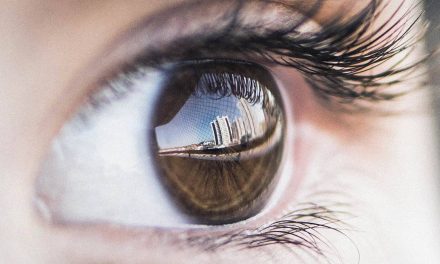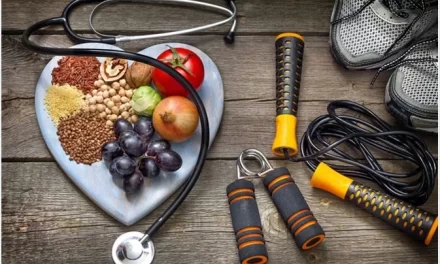For those who train almost every day and have struggled to gain strength and muscle mass, stopping can be a disorder due to the fear of losing part of our condition and gains.
A three-day full-body workout routine to keep you going in training for a couple of weeks?
The scientific literature tells us that within two or three weeks maximum, no loss of muscle mass or strength has been observed that should be taken into account.
You may look smaller or deflated in the mirror, but this is normal and does not imply that you have lost muscle mass.
To explain this, we must remember the differences between sarcoplasmic and sarcomeric hypertrophy.
Eating before or after training is better: this is what you should know.
Sarcoplasmic hypertrophy refers to the increase in the non-contracting elements of the muscle cell. We speak of plasma, hemoglobin or calcium ions.
On the other hand, the sarcomeric refers to a growth of the elements that do contract, that is, to the muscle fibres that undergo development and increase in size.
In this way, in two or three weeks, the only thing that can be experienced is a punctual decrease in the content of the sarcoplasm, that is, in the non-contractile elements. This is normal since the sarcoplasm is responsible for nourishing and providing energy to the muscle cell. When you stop training, this sarcoplasm is no longer necessary and loses part of its glycogen density, for example. This is recovered at the same time we start training.
Yes, in principle, you should not be afraid to stop training if it is only for two or three weeks. However, this impact on your muscle mass and strength will depend on what happens during that time. Please note the following:
Try to stay active. You may not be able to train, and you may even be injured or have just had surgery, but if you can train from the waist up, do it; if you can train from the waist down, do it; if you can only walk, do it. The risk of losing muscle mass is higher if you are bedridden or on the couch.
Try to continue maintaining your eating and sleeping habits. Eating well and resting well do not depend or should not depend on whether you train, so do not stop eating correctly during your retirement from the gym.
Finally, keep your stress levels in check. If you don't train because you're on vacation, this won't be a problem, but if you don't train for reasons beyond your control, don't dwell on it.Squats are one of the most efficient exercises to gain muscle mass or lose flaccidity, as we also lose body fat. The squat is an exercise that works not only the lower body but also the torso since we need the core to maintain the posture as we go down.
Although the squats that we do at home have a lower risk of injury than if we do them in a gym with weight, it does not mean that we do not have to do them correctly, not only because of the injury but also because we work the movement correctly.
Telecommuting and a sedentary lifestyle: this is how you can stay active if you work at home
How to place the feet
The first thing is to know where to place your feet. It is prevalent to observe that people do them very open (what would be called a sumo squat) because they think that this way, they work the gluteus more, and this is a mistake.
In this case, the gluteus is not worked by opening or closing the legs more but by flexing and extending the hip, a movement which cannot be performed with a short range of motion if our feet are wide open. For this same reason and to feel comfortable performing the squat, it is best to place the feet at an acromial width or a slightly wider one.
As for how to place the feet, whether turned out or in, it is best to turn the knees a little out so that, when going down, the knees go to the same point as the feet, thus avoiding knee valgus that, although it is not dangerous per se, it can lead Introduce us to the squat technique.
How to position your arms
No matter how you put your arms, we must remember that these will help us maintain balance, so we would have to put them very close to our body or flex the shoulder and fully extend the arm, so they are parallel. Down.
There is no better position than another since everything will depend on how comfortable the person is. Of course, something to avoid is leaving the arms dead, as they can make it difficult for us to execute the squat.
Everything you need to know about the squat to get the most out of it in the gym
How to move your hips and knees
Squats is an exercise where the entire quadriceps is worked, so the main movement should be knee flexion and extension, although the hip also has to move.
Sometimes we find squats with excessive hip flexion and minimal knee flexion, which can cause a very pronounced lumbar curvature and, usually, the stimulus received by the legs is impoverished.
A home trick often used to work the legs efficiently is to place a foam roller, a roller used to give myofascial massages, between the back and the wall, put the feet forward a little and go down. This will allow us to go down fully vertical, provide an excellent stimulus to the quads, and learn a vertical squat’s motor pattern.
How to increase the intensity
If you train at home and the classic squat is a bit short for you, you can buy elastic bands and place them on your traps while you step on them so that they oppose more resistance when you perform the concentric movement (that is, when you go up).
On the other hand, we have the pistol squats, practically doing one-legged squats. If we do not have enough strength, we can sit on a chair, sofa, drawer, etc. and perform only the concentric movement.





